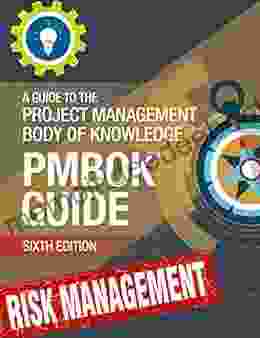Comparing Regional Organizations: Global Dynamics and Regional Particularities

Regional organizations are important actors in the international system. They play a vital role in promoting regional cooperation, economic integration, and conflict resolution. Regional organizations also serve as platforms for dialogue and collaboration between states in a particular region.
The development and functioning of regional organizations are shaped by both global dynamics and regional particularities. Global dynamics include the forces of globalization, interdependence, and the rise of new powers. Regional particularities refer to the unique historical, cultural, political, and economic characteristics of a particular region.
This article compares regional organizations from a global perspective. It explores the commonalities and differences between regional organizations and examines the impact of global dynamics on their development and functioning. The article also discusses the influence of regional particularities on the development and functioning of regional organizations.
5 out of 5
| Language | : | English |
| File size | : | 5733 KB |
| Text-to-Speech | : | Enabled |
| Screen Reader | : | Supported |
| Enhanced typesetting | : | Enabled |
| Word Wise | : | Enabled |
| Print length | : | 176 pages |
Regional organizations share a number of common features. First, they are all composed of states that are geographically proximate. Second, they all have a common purpose or mission, such as promoting regional cooperation, economic integration, or conflict resolution. Third, they all have a formal structure and organization, such as a secretariat, a governing council, and a dispute settlement mechanism.
However, there are also some important differences between regional organizations. These differences include:
- Membership: Some regional organizations are open to all states in a particular region, while others are more exclusive. For example, the European Union (EU) is open to all European states, while the North Atlantic Treaty Organization (NATO) is only open to states in North America and Europe.
- Scope: Some regional organizations have a broad scope of activities, while others have a more narrow focus. For example, the Organization of American States (OAS) has a broad mandate to promote cooperation in all areas, while the Association of Southeast Asian Nations (ASEAN) has a more narrow focus on economic cooperation.
- Powers: Some regional organizations have strong powers, while others have more limited powers. For example, the EU has supranational powers in certain areas, such as trade and competition policy, while ASEAN has more limited powers in these areas.
Global dynamics have a significant impact on the development and functioning of regional organizations. The forces of globalization, interdependence, and the rise of new powers are all shaping the way that regional organizations operate.
Globalization is the process of increasing interconnectedness and interdependence between countries. Globalization has led to a number of changes in the international system, including the increased flow of goods, services, and capital across borders, the rise of global supply chains, and the emergence of new global actors.
These changes have had a significant impact on regional organizations. Globalization has made it more difficult for regional organizations to control the flow of goods, services, and capital across their borders. It has also made it more difficult for regional organizations to promote economic integration within their regions.
Interdependence is the state of being mutually dependent on each other. Interdependence has increased significantly in the globalized world. Countries are now more dependent on each other for trade, investment, and security.
Interdependence has had a number of effects on regional organizations. It has made it more difficult for regional organizations to pursue independent policies. It has also made it more important for regional organizations to cooperate with each other.
The rise of new powers is another important global dynamic that is shaping the way that regional organizations operate. The rise of new powers, such as China and India, is changing the balance of power in the international system.
The rise of new powers has had a number of effects on regional organizations. It has made it more difficult for regional organizations to maintain their influence in the international system. It has also made it more important for regional organizations to cooperate with new powers.
Regional particularities also have a significant impact on the development and functioning of regional organizations. The unique historical, cultural, political, and economic characteristics of a particular region shape the way that regional organizations operate.
History can have a profound impact on the development of regional organizations. For example, the history of colonialism in Africa has had a significant impact on the way that regional organizations have developed on the continent.
Culture can also influence the development and functioning of regional organizations. For example, the cultural diversity of the Caribbean has led to the development of a number of different regional organizations in the region.
Politics can play a major role in the development and functioning of regional organizations. For example, the political instability in the Middle East has made it difficult for regional organizations to operate effectively in the region.
Economics can also influence the development and functioning of regional organizations. For example, the economic disparities between countries in Southeast Asia have made it difficult for ASEAN to promote economic integration in the region.
Regional organizations are important actors in the international system. They play a vital role in promoting regional cooperation, economic integration, and conflict resolution. Regional organizations also serve as platforms for dialogue and collaboration between states in a particular region.
The development and functioning of regional organizations are shaped by both global dynamics and regional particularities. Global dynamics include the forces of globalization, interdependence, and the rise of new powers. Regional particularities refer to the unique historical, cultural, political, and economic characteristics of a particular region.
The interplay between global dynamics and regional particularities is complex and ever-changing. As the global landscape continues to evolve, regional organizations will need to adapt to new challenges and opportunities.
5 out of 5
| Language | : | English |
| File size | : | 5733 KB |
| Text-to-Speech | : | Enabled |
| Screen Reader | : | Supported |
| Enhanced typesetting | : | Enabled |
| Word Wise | : | Enabled |
| Print length | : | 176 pages |
Do you want to contribute by writing guest posts on this blog?
Please contact us and send us a resume of previous articles that you have written.
 Chapter
Chapter Genre
Genre Reader
Reader Paperback
Paperback Newspaper
Newspaper Shelf
Shelf Glossary
Glossary Synopsis
Synopsis Annotation
Annotation Footnote
Footnote Codex
Codex Tome
Tome Bestseller
Bestseller Library card
Library card Narrative
Narrative Biography
Biography Autobiography
Autobiography Memoir
Memoir Encyclopedia
Encyclopedia Dictionary
Dictionary Thesaurus
Thesaurus Narrator
Narrator Character
Character Resolution
Resolution Librarian
Librarian Card Catalog
Card Catalog Borrowing
Borrowing Periodicals
Periodicals Scholarly
Scholarly Lending
Lending Reserve
Reserve Academic
Academic Interlibrary
Interlibrary Literacy
Literacy Thesis
Thesis Dissertation
Dissertation Storytelling
Storytelling Book Club
Book Club Theory
Theory Textbooks
Textbooks Diane A Ladley
Diane A Ladley Karoline Dahrling Hughes
Karoline Dahrling Hughes Vijayakrishna R N
Vijayakrishna R N Sue Wentz
Sue Wentz Julie Condliffe
Julie Condliffe Jim Tankersley
Jim Tankersley John Kruth
John Kruth Dmitry I Ignatov
Dmitry I Ignatov Max Abrahms
Max Abrahms Greg Pond
Greg Pond David Eagleman
David Eagleman Donna Sylvester
Donna Sylvester George Yool
George Yool Susan Page Davis
Susan Page Davis Christopher Winn
Christopher Winn Simone St James
Simone St James Waldtraut Lewin
Waldtraut Lewin Lester Ferguson
Lester Ferguson Deborah Challinor
Deborah Challinor Leil Lowndes
Leil Lowndes
Light bulbAdvertise smarter! Our strategic ad space ensures maximum exposure. Reserve your spot today!

 Rudyard KiplingThe Art Forger: A Masterful Tale of Deception, Revenge, and the Unbreakable...
Rudyard KiplingThe Art Forger: A Masterful Tale of Deception, Revenge, and the Unbreakable... Federico García LorcaFollow ·7.8k
Federico García LorcaFollow ·7.8k Benjamin StoneFollow ·7.5k
Benjamin StoneFollow ·7.5k Calvin FisherFollow ·19.1k
Calvin FisherFollow ·19.1k José SaramagoFollow ·15.6k
José SaramagoFollow ·15.6k Logan CoxFollow ·8.9k
Logan CoxFollow ·8.9k Jeffrey CoxFollow ·8.8k
Jeffrey CoxFollow ·8.8k Truman CapoteFollow ·7.6k
Truman CapoteFollow ·7.6k George Bernard ShawFollow ·16.9k
George Bernard ShawFollow ·16.9k

 Vernon Blair
Vernon BlairHow to Get a Woman to Pay for You: A Comprehensive Guide...
In the modern dating...

 Levi Powell
Levi PowellPrinciples and Theory for Data Mining and Machine...
Data mining and machine learning are two...

 Andrew Bell
Andrew BellMirrors For The Mind: Milestones In Discovery And...
Mirrors have been a part of human history...

 Alec Hayes
Alec HayesDelving into Natural Language Processing with Java and...
Natural Language Processing (NLP) is an...
5 out of 5
| Language | : | English |
| File size | : | 5733 KB |
| Text-to-Speech | : | Enabled |
| Screen Reader | : | Supported |
| Enhanced typesetting | : | Enabled |
| Word Wise | : | Enabled |
| Print length | : | 176 pages |














